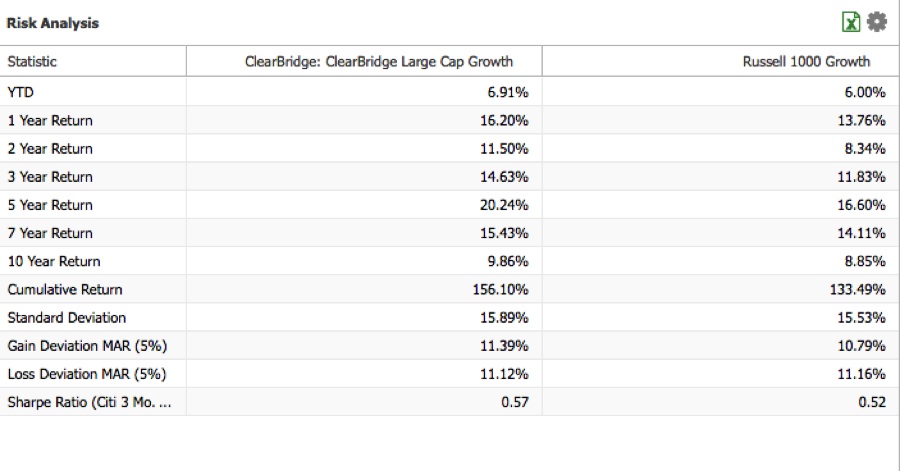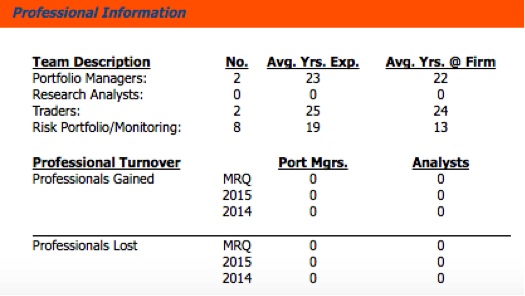4 Steps to Finding the Best Funds for You
It's a big fund universe out there; here's how to narrow down your choices.

In my previous articles, we've discussed the large role that luck plays in investing; creating our individual strategy; and some of the tools we can use to tease out luck from skill. We'll now put those tools to use.
Let's take a look at the large-cap domestic asset class in our hypothetical portfolio. This may be the largest allocation for many Americans, and there are many participants in this space. We could break our allocation into smaller components, and spread our allocation to large-cap U.S. value, large-cap U.S. growth or large-cap U.S. blend. I'd recommend keeping your options open in your initial screen.
Here are four steps to whittle down your options and make the best selection for you:

Sign up for Kiplinger’s Free E-Newsletters
Profit and prosper with the best of expert advice on investing, taxes, retirement, personal finance and more - straight to your e-mail.
Profit and prosper with the best of expert advice - straight to your e-mail.
1. Your Initial Screen
First, you have to decide your minimum requirements for a fund. Let's say we want an investment with at least a three-year track history, the same manager at the helm for at least two years and a minimum of $75 million under management.
To screen for funds that meet these requirements, plus whatever other details you'd like to name, I'm partial to the fi360 database, a service provided by the Center for Fiduciary Studies—mainly used by professional advisers. You could start your search by using Morningstar.
Now, let's look for funds that rank highly, with four or five stars over three- and five-year periods on a consistent basis. In my sample search (conducted in October), I'm looking for top quartile funds across a variety of metrics, including alpha, which measures the active return on an investment. My search results in 38 initial qualifying funds out of the entire large-cap domestic stock universe.
The following are at the top of that list:
- First Trust Value Line Dividend ETF (symbol FVD)
- SPDR S&P Dividend ETF (SDY)
- Powershares QQQ ETF (QQQ)
- ClearBridge Large Cap Growth I (SBLYX)
Morningstar classifies the first two as large-value and the next two as large-growth. So your allocation requirement would affect what you might choose here. Let's assume that you have a need for large-growth fund and investigate the Clearbridge option.
2. Deeper Analysis
Let's assume you can actually buy this fund (it is an institutional fund with a high minimum purchase requirement; some custodians allow RIA firms to buy in smaller increments for their clients). Next, you want to take a deep dive into the data. I am going to use another tool typically used by us pros called Evestment. You could find most of this data on Morningstar and Google Finance.
Here are some basic statistics (all fund data is as of September 30, 2016):

Looks promising so far! Let's look at some additional information, such as alpha, tracking error (deviation of the fund's prices from the benchmark's prices) and excess returns (how much better the fund performs—or not—compared with its benchmark):

There is a pretty consistent record of alpha-generation, significant tracking error and returns consistently in excess of its benchmark. Not only that, the management team seems to meet our experience and tenure requirements:

3. Check the Company Filings
Visit the firm's website, where you can gain a wealth of additional information, including management and analyst commentary, top holdings, philosophy and strategy, expenses and more.
In the commentary of the Clearbridge fund, you can see that the current sector allocations are heavy on information technology, health care and consumer discretionary holdings with 66% of the portfolio in those three areas. Additionally, the strategy of this fund involves holding a core group of stocks, surrounded by a cyclical bucket and a select bucket of opportunistic holdings. This approach appears to be working for this manager, and it highlights where skill and process may have a positive impact on results.
As an investor, you need to be comfortable with the future of this strategy. Comfortable enough to forgo an indexing or low-activity approach in favor of this perceived skill.
4. Evaluate Costs
This fund charges between 0.81% and 1.11%, based on share class. Assuming you can get the lowest cost institutional class, you'll pay the manager 0.81%, which will be a potential drag on your returns.
You have to evaluate whether this fee is worth it. Compare the returns on this fund with its benchmark, the Russell 1000 Growth index (returns are reported net of fees). Considering that the iShares Russell 1000 Growth ETF (IWF) has an expense ratio of 0.20%, the added cost to buy the Clearbridge fund is 0.61% to 0.90%. Will it be worth it? Judging from the history and statistics, perhaps. Going back to 1997, the Clearbridge fund has shown excess returns of at least 1.07% in every year except six. So in 14 out of 20 years, the fund did better than its benchmark. That's a 70% chance, historically.
In conclusion, I hope I've given you some insight into the process you should follow to make an informed selection of an investment for your portfolio. The process is similar, but with many additional variables when looking at individual stocks and bonds.
If you are not inclined to do this work yourself, then either hire a reputable fee-only fiduciary adviser to help you or simply choose low-cost index funds. If you aren't in the investment business full-time, using index funds takes a lot of variables out of the equation, so that you can concentrate on your overall diversification strategy, cash flow, etc.
Doug Kinsey is a partner in Artifex Financial Group, a fee-only financial planning and investment management firm based in Dayton, Ohio.
Get Kiplinger Today newsletter — free
Profit and prosper with the best of Kiplinger's advice on investing, taxes, retirement, personal finance and much more. Delivered daily. Enter your email in the box and click Sign Me Up.

Doug Kinsey is a partner in Artifex Financial Group, a fee-only financial planning and investment management firm in Dayton, Ohio. Doug has over 25 years experience in financial services, and has been a CFP® certificant since 1999. Additionally, he holds the Accredited Investment Fiduciary (AIF®) certification as well as Certified Investment Management Analyst. He received his undergraduate degree from The Ohio State University and his Master's in Management from Harvard University.
-
 How Many IRS Commissioners Have We Gone Through This Year?
How Many IRS Commissioners Have We Gone Through This Year?IRS Who were the former commissioners, and why did they resign? Find out how IRS turnover can impact your taxes.
By Kate Schubel
-
 Trump Dials Back Most Tariffs but Targets China
Trump Dials Back Most Tariffs but Targets ChinaThe Kiplinger Letter Wall Street hopes that higher tariffs on most countries are on hold for good. But the trade war between the U.S. and China is heating up.
By Jim Patterson
-
 First 100 Days: Trump's Impact on Your Finances
First 100 Days: Trump's Impact on Your FinancesHere are some opportunities to consider regarding investing, interest rates and tax cuts as the financial landscape shifts under the new administration.
By Daniel Razvi, Esquire
-
 What Would Happen if You Put Your Tax Refund in an IRA?
What Would Happen if You Put Your Tax Refund in an IRA?Not only could you get a tax break, but the compounding effect over 35 years could turn the average refund into nearly $14,000.
By Romi Savova
-
 Children Can't Afford to Fly the Nest? Here's How to Help
Children Can't Afford to Fly the Nest? Here's How to HelpThe high cost of living means more adult children are staying at home. Here are four ways to help financially so they can eventually spread their wings.
By Kelli Kiemle, AIF®
-
 A QLAC Does So Much More Than Simply Defer Taxes
A QLAC Does So Much More Than Simply Defer TaxesHere are the multiple ways you can use a QLAC, from managing retirement risks to creating income for specific retirement needs and wants.
By Jerry Golden, Investment Adviser Representative
-
 Self-Directed Brokerage Accounts: Retirement's Hidden Gem?
Self-Directed Brokerage Accounts: Retirement's Hidden Gem?SDBAs are often overlooked, but they can offer more flexibility and growth potential inside your 401(k) when actively managed by a professional.
By Scott M. Dougan, RFC, Investment Adviser
-
 Early-Stage Startup Deals: How Does a SAFE Work?
Early-Stage Startup Deals: How Does a SAFE Work?Investing in an early-stage startup can get complicated fast, so the venture capital industry turns to other investing options. One is a SAFE.
By Murat Abdrakhmanov
-
 Should You Hire a Public Adjuster for Your Insurance Claim?
Should You Hire a Public Adjuster for Your Insurance Claim?As natural disasters strike more often, insurance clients are asking, 'What should I do, or who should I hire, if my insurance company is jerking me around?'
By H. Dennis Beaver, Esq.
-
 Tips to Help Entrepreneurs Create Self-Sustaining Businesses
Tips to Help Entrepreneurs Create Self-Sustaining BusinessesWith the right processes and people in place, a truly sustainable business can be efficiently passed on to a successor and run profitably on its own.
By Jason L Smith, CEP®, BPC